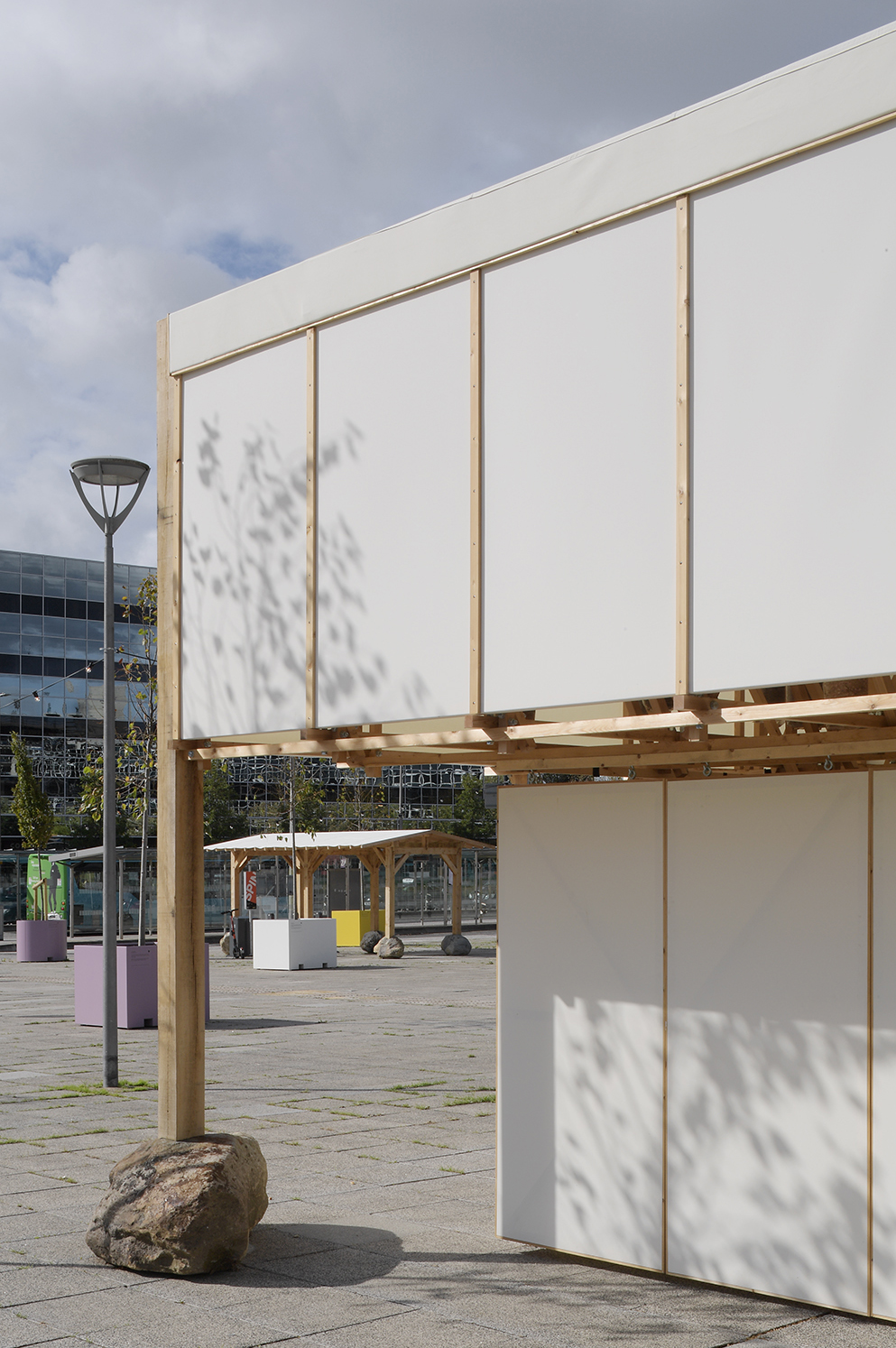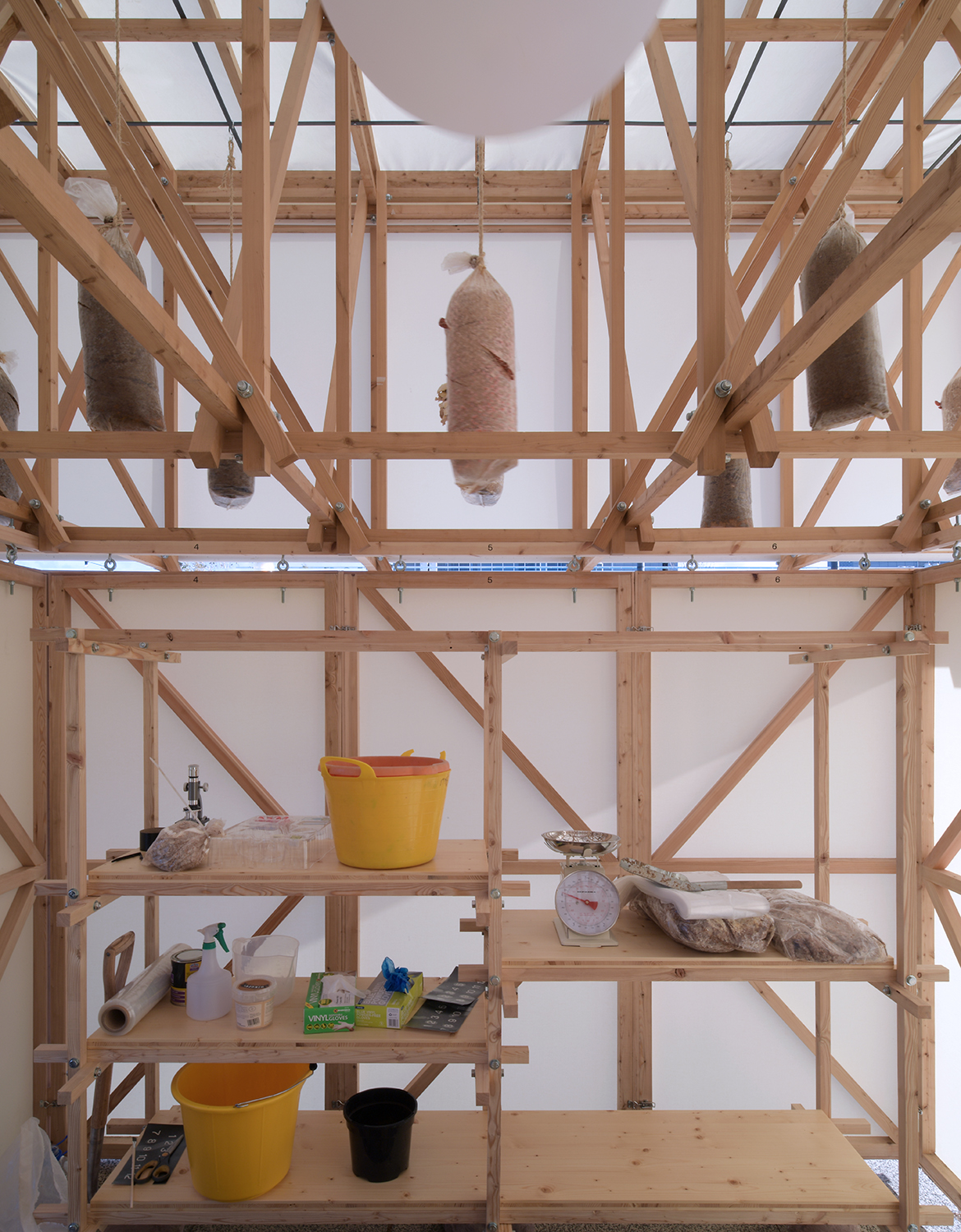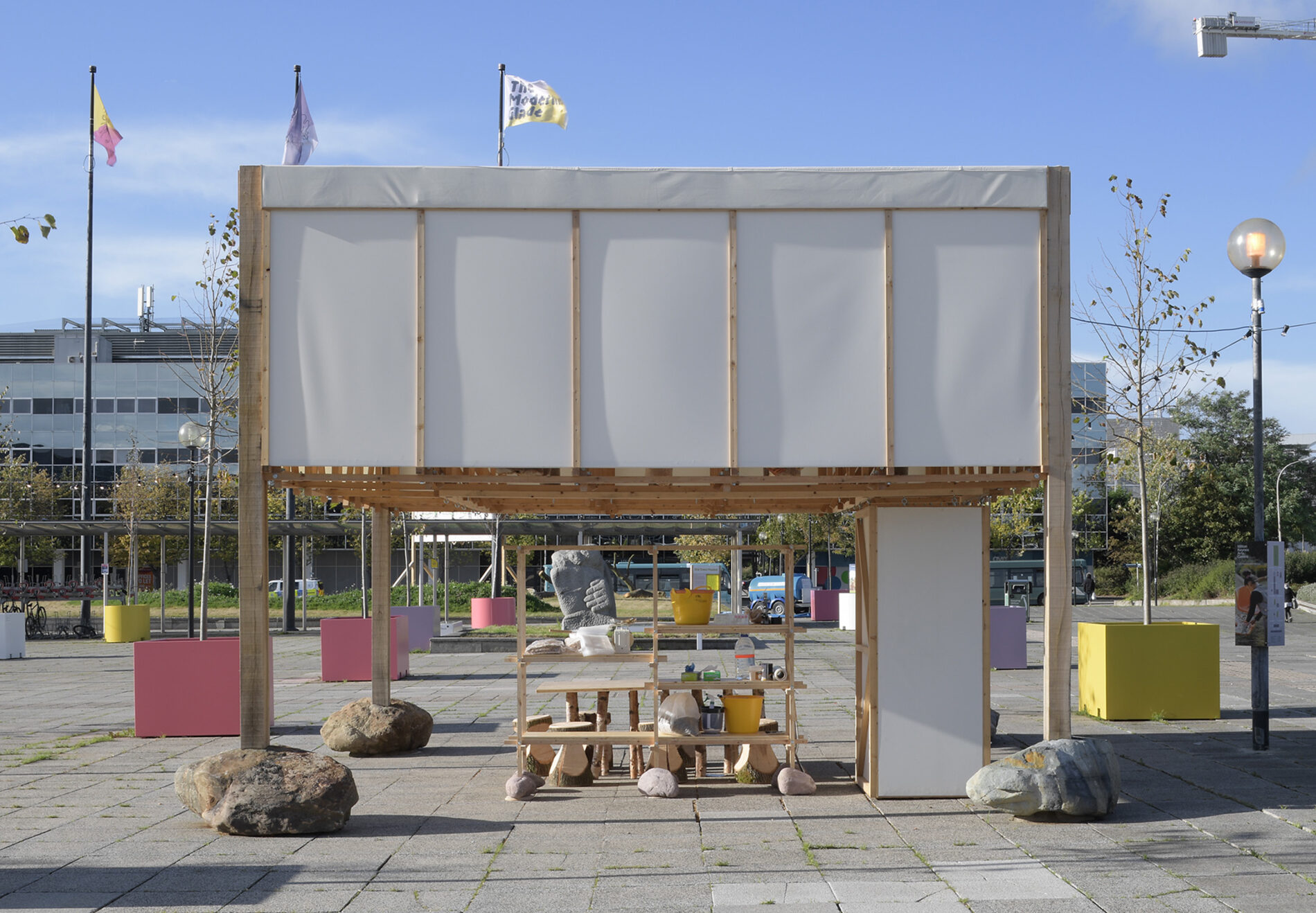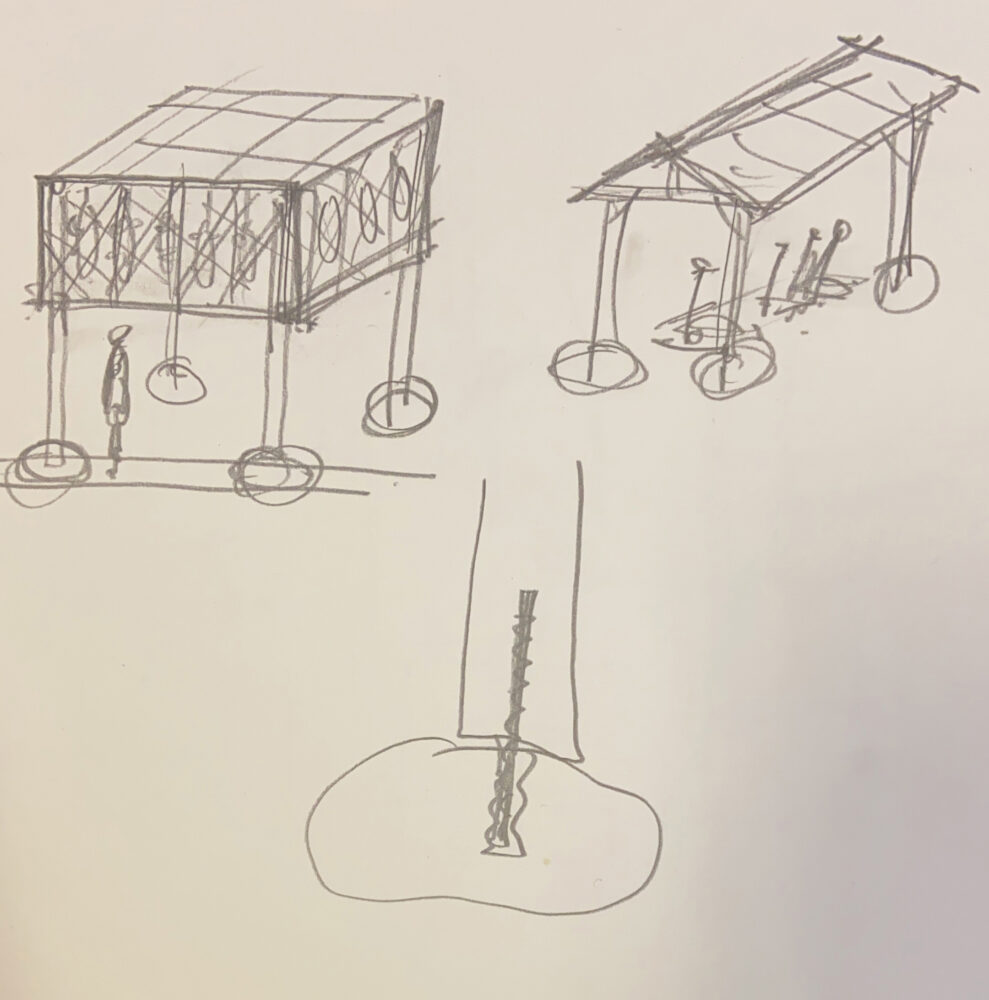Inspired by Helmut Jacoby’s 1960s drawings for the MK Development Corporation, this project builds on the modernist landscape of Milton Keynes’ and the ecological concept ‘The Forest City’. Since its founding in 1967, Milton Keynes has integrated over 22 million trees, making up more than 25% of the city’s area.
Recent scientific discoveries have highlighted the complex relationship between trees and fungus, particularly the mycelium networks that facilitate a symbiotic exchange between them. The Modernist Glade draws on this relationship, featuring a mushroom pavilion designed by Hayatsu Architects. This pavilion will grow oyster mushrooms and include a learning lab for the public to learn about mycelium.
The structure’s removable cotton canvas panels can open the lab to the square, inviting passers-by to interact with the growing mushrooms and lab activities. The Modernist Glade references Milton Keynes’ iconic steel pavilion, Porte-cochère, but in a more natural material palette; timber, un-cut stone, and cotton canvas.
The project’s ecological focus extends to the two giant lawns flanking Station Square, which will be enhanced with wildflowers to attract insects and support and promote biodiversity. These lawns also host architectural structures, including a cinema screen forming part of the project’s two-year engagement programme, as well as a beehive structure with a glazed ceramic flower face and bee-painting canopy.
Hayatsu Architects have also designed a micro-mobility hub in Station Square, integrating scooters into the existing transport infrastructure. New banners reflecting the four colours of oyster mushrooms will be displayed on existing flagpoles, creating a renewed graphic identity for the square.
The project is part of the Renaissance: CMK initiative led by Milton Keynes Council (MKC) and Milton Keynes Development Partnership (MKDP), aiming to revitalize the city centre. The interactive nature of The Modernist Glade works to promote a positive and open dialogue about ecological sustainability, testing of greener approaches to the square’s extensive concrete landscape, and foster discussions on the mitigation of climate change.



















